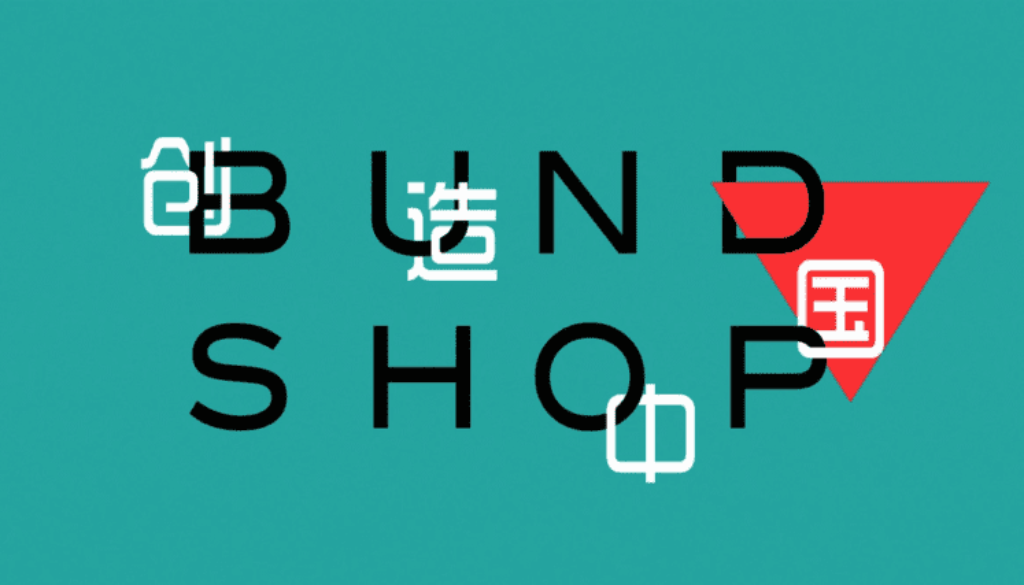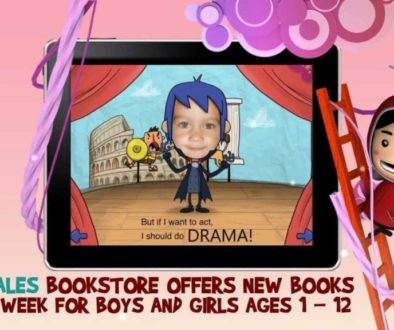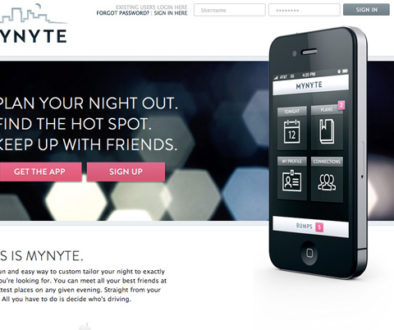Startup Profile: BundShop
BundShop is the first portal to Chinese design, offering a “curation” and an “access” solution. Our competitive advantage is in cultivation of long-term relationships with emerging independent industrial, fashion and product designers. As the first to approach these designers, we are able to procure exclusive collaborations, and designers’ loyalty to grow alongside BundShop. We offer access and logistics innovation through an eCommerce platform that showcases one product every 24 hours. I recently sat down with Stephany Zoo , Founder of BundShop to learn about how the company was started, how it operates, and what is in store for the future.
Tell us about yourself first. What is your history? Where did you go to school and work in the past?
Diana was trained for diplomacy in US-China relations. Somewhere along this path, she caught the entrepreneurial bug and came to China to start the country’s first whisky distillery. As she was about to convert a rice wine distillery in Anhui to a whisky distillery, she discovered the severity of cataract blindness in impoverished communities of Shanghai, and approached the CEO of retro sunglasses brand Blublockers to re-launch the brand in China under a social entrepreneurial model, to restore vision to the cataract blind. In the process, she discovered a new generation of creative independent designers, decided to create the first online platform to feature Chinese fashion and industrial design. And thus was born BundShop– featuring a new design product and story from China every 24 hours.
Stephany Zoo creates fire, not flash. Incubated at powerhouses like Ralph Lauren, Princeton, and Likeable Media, Stephany is a vigorous steward of brand, relentlessly excited about enduring imprints of image and word. A New York City transplant, Stephany seeks to bridge her bicultural heritage and achieve a greater understanding of international consumer behavior. She enthusiastically advances the customer development of BundShop, leveraging digital and viral assets to disseminate BUNDSHOP. COM’s vision and voice.
Who have been your business startup inspirations? Did you learn anything from them specifically?
John Maeda: Since we work in the design industry, John Maeda the president of RISD and author “Redesigning Leadership” has offered invaluable kernels of advice. It teaches us how to be approachable and bring creativity into leadership styles
Seth Godin: At the very beginning, we had one very desolate night, so we sent Seth Godin a response to an email post– and he immediately sent an morale boosting response back. An excited exchange continued and we ended sending him a package of our inspirations. We learned if we do and create things that we are proud of, others will be equally proud of us and the creation.
Clara Shih: As female Asian-American female entrepreneur, we really look up to Clara Shih for technical expertise in a mostly male area but also her unwavering sense of ambition. She is truly a standout in every way imaginable, with an undeniable level ability that does not allow for others to use her gender or her ethnicity as an excuse to keep her from excelling.
Steven Wang: A close friend of ours and founder of RottenTomatoes.com, he has taught us focus, reliability and patience. Companies don’t boom overnight– they are products of consistent efforts and measuring day in and day out, that climax into something truly innovative.
Dave Kerpen: As my previous boss at Likeable Media and author of NYT Bestseller Likeable Social Media, he set an incredible example for what it meant to run a company with passion and transparency. I was able to work directly underneath him at Likeable, being exposed to business meetings with international entrepreneurs and difficult situations alike. This taught me to handle bad situations as smoothly and with the same values as you would the good.
What was your inspiration to start your company?
Exactly one year ago, January 2011, the concept for BUNDSHOP was born. For years, as children of Chinese immigrants abroad, we had spent time in between China and our home countries abroad. In recent years, we’ve been increasingly blown away by the creative designers and original brands emerging from China.
But, upon return to the West, we discovered our friends and colleagues saw only the manufacturing, copy-cat side of China, only homogenous factory goods.
We set out to change that.
Based in Shanghai, our team adventured throughout greater China, searching for the best industrial and fashion designers. We work with designers with studios and flagship stores in Hong Kong, Taiwan and all through greater China. Our only criteria: passion for design and originality. We spend months working with each designer to understand and depict their stories, products, and long-term visions, and to help them set the foundations to create internationally competitive brands.
Tell us how your company started and when. Who was involved and what did each person do?
In the beginning, we pulled together a startup team of four, Donnie Yu, our Shanghainese operations manager; Ruizhi Jiang, a student at Brandeis with logistics background and family roots in Shandong; Lilly Bussmann, talented community manager of Sandbox from Oxford, half German-half Shanghainese, and Diana Tsai, CEO, half-Shanghainese, half-Taiwanese, originally on the path to diplomacy and US-China relations but converted to entrepreneurialism as a solution to social demands around age 18.
We raised funding in March 2011 from angels in China and the US, moved to Shanghai June 2011, and began a sourcing whirlwind. We aimed to truly understand why Chinese brands were facing such challenges in international markets, so we interviewed every designer we could find. Over 100 interviews later, we took all of the problems they identified and created Bundshop, the world’s first platform to promote the stories and products of emerging Chinese brands.
Around August 2011, we were joined by Stephany Zoo, CMO and Michael Cignarale, creative director, rounding out the team as we now had our first collection of 15 designers and our beta site. Stephany’s incredible talent in PR and digital marketing has been one of the key drivers to our fast growth– from China Daily to Core77, Stephany has accumulated over 30 publications on behalf of Bundshop in the last 45 days. Michael has been working on our new site and the visual identity of all of our brands, his aesthetic brilliance is derived from a background in art history and impeccable design taste– he’s self-taught in anything from Ableton to photoshop, and there’s a purity to his style that is reflected in the core essence of Bundshop and the new version of the site that launches late February.
Tell us an interesting story about your business. Were there any “wow” moments? Anything funny or unusual?
To be honest, every day is craziness– fun– terrifying. We reach out to random business executives for tea via LinkedIn, and
The first bulk order we received wasn’t very big– 14 of Carl Liu’s Shanghai Breeze fan, but we got a very excited email from the customer who was ordering them as gifts for a corporate event. He told us that he knew he could get the same fans on Taobao for a fraction of the price, but instead chose to order from us because he supported our vision.
Initially we worried that consumers cared more about price and that we wouldn’t be able to fully convey our energy and greater goal of Made in China to Designed in China. However, this confirmed out hypothesis that there were indeed consumers out there who cared about story and our support of emerging designers, not just price.
What is your role in the company now?
As a co-founders, all our roles come with great variety. Currently I lead all marketing strategy and press outreach, as well being the product manager for the development of our new web 2.0 site for February. Diana, on the other hand, concentrates on sourcing and bringing on designers and working with our Council on Chinese Design to curate the best of Chinese Design. We both brainstorm on corporate strategy and long term business development. Donnie takes care of all logistics and any of our manufacturing, while Michael designs our catalogs, website, and all other collateral. He’s also our resident DJ!
What does your company sell and how does it make money?
We sell a story– that of internationally competitive designs coming out of a country conventionally seen a cheap, unoriginal manufacturing giant. As consumers become more and more sophisticated, they don’t want to just buy an object. We tell the story about our designers so that our customers understand that we’re not just selling an incense burner or a scarf, we’re showcasing the physical manifestation of the designer’s creativity.
Our base business is based on ecommerce sales, but we have a couple of new initiatives coming in 2013. We now offer full branding and media consulting services to some of our more nascent designers, and are very excited to be more involved in their brand’s birth. Because our unique selection makes a very unique client and employee gifts we also have released a corporate gifts program, offering steep discounts for larger orders for select products, just in time for Chinese New Year. Since high end products sell better in person, we have also been speaking to design cafes to establish a brick and mortar presence in China.
Which companies do you consider to be competitors?
On one hand our competitors are obviously the other ecommerce design sites– Fab, Ahalife, Wantful, etc. With these kinds of companies, we compete on more concrete terms, such as exclusive partnerships, digital marketing and corporate strategy. On the other hand, we are even more so competing against anyone who is selling “Made in China”. People often tell us we have too much working against us because massive commercial companies are still propagating negative stereotypes of China, but we very fervently believe it has to start somewhere. With compete with them through our vision and educational initiatives, such as our Council on Chinese Design, guest blogging and digital magazine.
What makes your products and services better than competitors’ offerings?
Exclusivity: We have exclusive international distribution to most of all of our designers, as well as the only online distribution. Our designer’s brands are not being diluted by Amazon, Whether our designers are established brands in China, or first time designers, our products are the best of Chinese Design, only available to the Western world through our online portal.
Customer Service: We send personal welcome messages to everyone who signs up on our listserv, we write handwritten notes to everyone who places an order. I know exactly where every single one of our customers comes from and why they bought. It that kind of meticulous customer service that shows our customers they are indeed buying more than a luxury product but a secret look into the Chinese creative community. It keeps them coming back.
We are a company that first and foremost serves two very distinct groups of people before we ever consider our profit margins or our exit strategy. The first are our designers– the reason were born, and the second are our customers– the reason we continue to grow.
We believe in the underclass of creatives of China that has been overshadowed by the heavy stamp of Made in China.
They may not seem like the conventionally disenfranchised class, but they too have been discriminated and dismissed: they are the minority in this country– and as minorities historically, they have been deeply disenfranchised by the loud, manufacturing corporations. All over the metropolises of Shanghai, Beijing and Hong Kong to the rural villages of Huangzhou, the fire of Chinese of creation has been once again lit. Product, fashion, architectural and graphic designers all over greater China are finding a new strength and a new voice.
Our products are not a vase, an incense burner, a scarf. Our products are a reawakening. They are the rebirth of the vibrant design generation of China, the invigorated creative community of the middle country.
We also seek to serve our customers in the best way possible, and whether that means writing them handwritten notes for each package, or being meticulous in the selection of our products we do it with the greatest passion.
We’re about people who speak the global language of good design, who love products that tell stories and start passionate, cultured conversations. They are deeply discretionary and care more about the story than the discount, the quality than the shipping speed. We exist for this community, who are frustrated by a marketplace that doesn’t deliver the unique objects they know exist but can’t find.
By showcasing and discussing the best of Chinese design, we bring daily excitement to people savvy enough to know ‘Made in China’ is Dead and ‘Designed in China’ killed it.
What are revenues so far this quarter? Year? What is your quarterly revenue growth from this same quarter in 2012?
Unfortunately at this time, we don’t release this information.
Does the company have any cash flow from financing activities? What is your total debt, if any?
We raised a round of $250,000 of funding from truly angelic angel investors.
Are you planning an IPO? If so, when? How are you raising capital?
In the words of Eric Savitz of Forbes, successful entrepreneurs don’t have an exit strategy.
Where do you see the company in five years in terms of revenue and profitability?
We have a couple options to scale through– either vertically or horizontally. Vertically we have considered becoming a crowdsourcing platform, where help Chinese designers with everything from conception to production to sales. Horizontally we would stay with ready made products, but expand the portal idea to giving windows of sales to more countries. For example, Swedish consumers would have access to Thai goods for 24 hours, while US consumers then had access to Swedish design products.
Either way some may think this is preemptive, as the design community in China is still very nascent, but in 5 years BUNDSHOP will be leading the most innovative design brands coming out of China because we believed in Designed in China when everyone else stuck at Made in China.
What would you define as your “primary market”?
The Design Community: People who are already immersed in good design and appreciate its value. They have no qualms about paying a premium for it, and frequent design blogs (Freshome, Codesign, Yanko, etc) and exhibitions. Designers also love to support each other’s works. We have found these market primarily in the Netherlands, Germany, Hong Kong and urban parts of the US.
Culturally Connected overseas Chinese: While they are usually more price conscious and late adopters when it comes fashion/design, heritage is a compelling reason to buy. They are most concentrated in LA, San Francisco, New York, and Toronto.
Above mass market, below fine art: These are the yuppies (young, urban professionals) who are looking for cultured conversations and stories. They may not have the financial resources to indulge in fine art (yet) but can be found at the latest gallery opening or hosting their own dinner parties to show off their new porcelain.
Expatriates: As we have received a lot of local press, about half our orders come from inside Shanghai. Furthermore, since our products often make very good gifts, they’re perfect for expats returning home for the Christmas season.
How big do you think this market will be in terms of total revenue in 2015?
Simply put, as China grows, this market will grow. More international consumers will be drawn to Chinese design. Despite the fact that GDP growth is scheduled to slow down, China’s consumer will continue to be become more sophisticated and therefore turn inwards to domestic designers.
What forms of marketing do you use to attract clients?
We have a couple of different initiatives– we found that while social media drives traffic, it doesn’t necessarily drive conversion. Press has been the most effective at conversions right now, and we have had features in China Daily, Global Times, Core 77 and South China Morning Post. While we have trouble gauging it, WOMM has been very effective also, as many of not only customers but potential employees have heard through the buzz we’ve generated in the design communities.
How big is the company in terms of its workforce?
Currently, we have 4 full time and 5 interns. We’ve also added six interns operating from around the world, in California, Virginia and Shanghai to support from everything from research to outreach.
What are the biggest growth catalysts (new technology, new offerings, etc.) for you right now? Tell us about any patents or other IP.
We are powered by the designers. We are at a paradigm shift for the Chinese design community right now, in the words of designer Junjie Zhang–
“Each year advances beyond the previous years– if you compare the quality of industrial designers from ten years ago to now…well, there is no comparison the gap is so large. Ten years ago product design was barely a major. Now you have more than 400 schools and 10,000 graduates each year,” he says.
Currently, this generation of designers are trained with a purely Western eye for design. “They have little understanding of Chinese history, Chinese culture, Chinese art,” says Junjie. However, the designers that started their careers in the late 90s have a unique style. Their grasp of Classical Chinese artistic training combined with studies of Western design lend to a fusion style of design that is lost among the post-millennial generation of Chinese designers.”
This window of designers, now mature designers, offers the world a glimpse at the first designs born from China’s opening to the international world. It will likely be decades before this style happens again, when the current class of industrial design students are ready to turn inwards to their roots, rather than outwards to western academic education, for inspiration.
Have you faced any regulatory hurdles, or anticipate any in the future? Explain.
Despite the fact that many foreign companies are currently having trouble with growth in China, we have managed to actually leverage government relations. The Chinese government has been very encouraging, since our company is in line with the CCP’s 12th five year plan to shift from “Made in China” to “Designed in China”. While we don’t take funding or legal aid from the Shanghai Municipal Government, they have been instrumental in helping us with trade fairs and connections with different design schools.
Are there any announcements you would like to make?
In late February/early March, we will launch our brand new website, with a full collection of 50 designers, a Council on Chinese Designers and a new digital magazine. Rather than featuring only ecommerce products, we will have more of a focus on education and curation.
To learn more about BundShop visit them at http://www.bundshop.com





